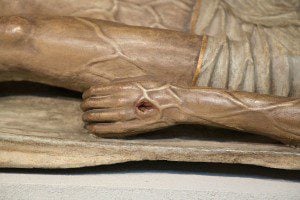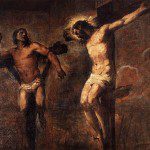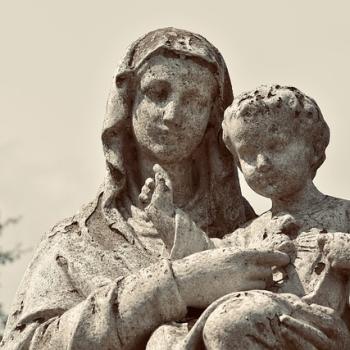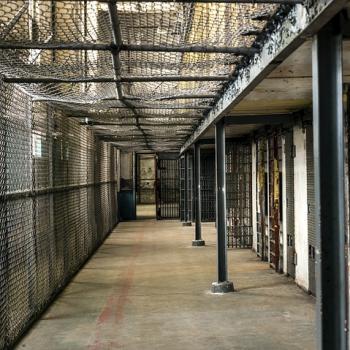
My friend Theresa posted a question on Facebook yesterday.
“Can anyone remember which saint had hidden stigmata during life? That was only revealed upon death?”
“Catherine of Sienna,” I said. She had invisible stigmata that hurt her every day, but it only became visible on her deathbed. There may have been others, as well.
“Wasn’t it Saint Pio?” said somebody.
No, Saint Pio had the opposite. He had stigmata throughout life that closed up the evening he died.
Theresa was asked why she was thinking so much about stigmata, lately, but I had already guessed the reason. Theresa has fibromyalgia, as do I. Her case is worse. I’m numb and tingly when I’m tired, which since I also have chronic fatigue syndrome is most of the time, and I’m in bad pain when I have a fibro “flare” a few times a month. Theresa is almost always in bad pain, almost always fatigued. She needs medication daily. Sometimes she uses a cane to walk. She recently went through the ordeal of trying to get declared officially disabled by a judge, but the judge denied her case. Fibromyalgia is crippling, but somehow it doesn’t count as a disability. Being in so much pain you can’t move isn’t the same as being paralyzed, legally speaking.
It’s hard to articulate the pain of fibromyalgia, for someone who’s never had the experience, especially since it’s different for everyone. There’s bad pain and soreness, sometimes, just like a severe bruise, but the bruise doesn’t discolor the skin at all so you can’t prove it’s happening. Sometimes my joints hurt so I can’t walk well on that ankle or carry grocery bags with that hand, but there’s no physical evidence of injury. Sometimes my legs go numb and my feet feel like I’m walking over sand, but there’s no visible reason why I suddenly become clumsy. It’s par for the course that Theresa and I get accused of imagining things or being lazy, or exaggerating for attention, every so often.
So, Theresa was praying to Saint Catherine of Sienna, whose suffering with Christ was also invisible.
Theresa and I compared notes on how else we pray when the pain gets bad. She imagines Christ hanging from the cross in relative stillness, nails forced through His hands and feet. I always imagine the scourging and the aftermath of the scourging, bones laid open to the air, nerves throbbing like electric shocks. I also imagine Him crowned and mocked– my fibro, or one of the other autoimmune conditions I have, no one’s sure which yet, makes me gain weight and retain water, and I’ve got another condition that makes the lining of my stomach swell, so I’m fat. No, I’m not big or plump or round, I’m fat. And people are not kind to sick people who are fat. I’m used to the patronizing questions about whether being fat caused the illness and whether it would go away if I weren’t so lazy. I’ve learned to identify with Christ, who looked ugly through no fault of His own and was abused for lying when He was only telling the truth.
On another Facebook thread on the same day, a friend who suffers from panic was talking about the Agony in the Garden. ‘I’ll bet it was just one long multiple-hour panic attack,” she said. I’ll bet she was right. I’ll bet it was also like PTSD– He had perfect knowledge of what was to come, after all, so I’ll bet His brain and nerves reacted to the future like a severe flashback. I’m sure He was tempted to suicide, too; there’s no way to suffer something like that and not be tempted. I’m sure He knows what it feels like to hold His own hands and beg God not to let Him do what His terrified mind is telling Him to do.
Christ is our God– the God of broken people. He didn’t have to be. He could have remained with His father, but He chose to take flesh so that He could suffer what broken people suffer– and so that every time someone thought of Christ, they thought of broken people.
He did this for me– and for Theresa, and for my friend with panic, and for all of us who are broken, so that our pain could be one with His. He died so that our death would be one with His, and so that everyone who suffers and dies will be participating in a sacred thing when they do. Christ became man and suffered so that we could be Christs when we suffer.
When the pain gets very bad, I lie down and I pray. I don’t “offer it up,” because that doesn’t make sense to me. I offer it in, because that’s where Christ is– within me, suffering with me. “Christ, I unite myself to You. I unite my feet to Your feet, my legs to Your legs, my groin to Your groin, my guts to Your guts. I unite my lungs to Your lungs, my heart to Your Heart. My arms to Your arms. My hands to Your hands. My neck to Your neck. My head to Your head. My senses to Your senses. My pain to Your pain. My fear to Your fear. My loneliness to Your loneliness. My ugliness to Your ugliness. My poverty to Your poverty. My sin to Your mercy.” And then I lie there, and I suffer, but the suffering is prayer because I worship the God of broken people.
I’m not saying it’s a good prayer, but it’s the prayer I have.
Tonight, I’ll go to liturgy and praise Him for the resurrection– the morning He returned to life with a glorified body free from suffering, but still bearing the marks of His passion. He still has the holes in His hands and feet. He always will. He is in Heaven, perfect and perfectly beautiful, but He remains wounded. He wanted, for all of eternity, to be seen as the God of broken people.
And we, the broken people, glory in His passion and Resurrection, because He did it for us.













